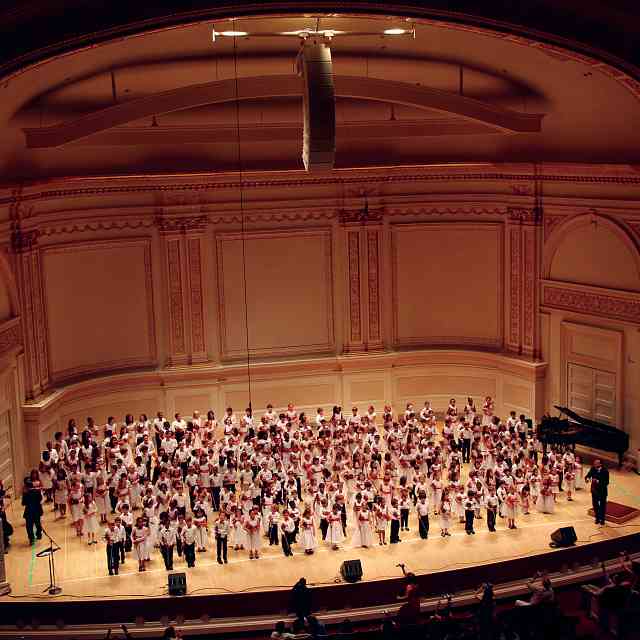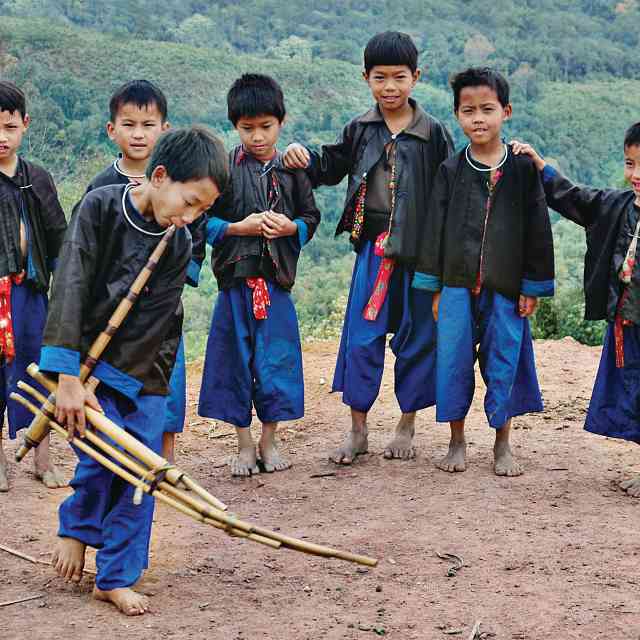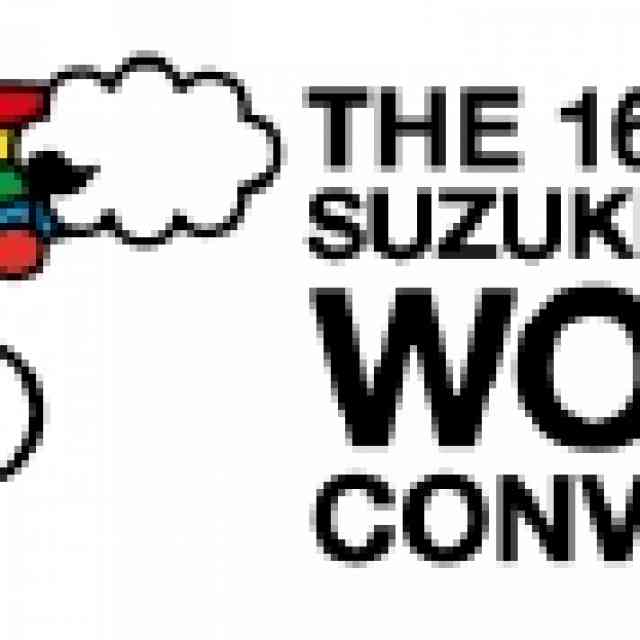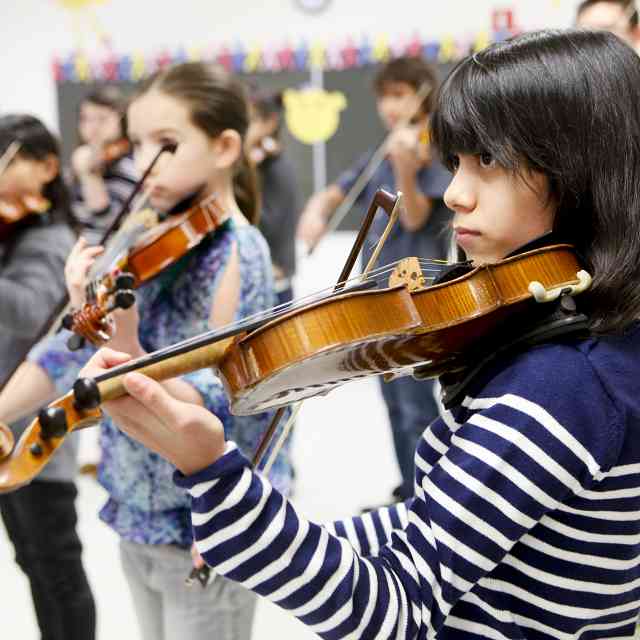The Suzuki Method, Talent Education, and Me
I have been fortunate to be involved with the Suzuki method, as a student and a teacher, for more than thirty years, working in Japan and the US, and I had a feeling that I knew the Suzuki method very well.
Because I like learning more about the Suzuki method, I constantly read Dr. Suzuki’s writings, go to workshops, and observe lessons given by accomplished Suzuki teachers in the US and Japan. As I began studying more about the Suzuki method, however, I started developing a curiosity about where his ideas had come from. I wondered what helped him shape the unique idea of the so-called Suzuki philosophy, the origin of which is not fully explained. I always had a sense that something was missing in the study of the history of the Suzuki method, and it has been a long and secret enthusiasm I had for my own learning.
We all know when the Suzuki method was born and what happened next, but not much explanation is given to why and how Dr. Suzuki reached the idea. I started wondering what was behind the Suzuki method. More precisely, what were the national, cultural, and educational backgrounds that produced the revolutionary method of teaching children?
Talent Education and Elementary Education
The Suzuki method began as a violin method, but Dr. Suzuki himself thought of this method as much more than music instruction. He sought for broader application of the method—to make good citizens. In fact, two years later, he started an experimental class in a local public school, Hongo Elementary School, with the help from a classroom teacher Mr. Shigeki Tanaka and the school’s principal, Mr. Shigeru Kamijo. Their intention was to reach all students. The program ran for three years (from 1948 to 1951), until Mr. Kamijo died suddenly. The new principal disapproved of the program and these unique classes were never put back in the school despite Mr. Tanaka’s and Dr. Suzuki’s efforts. We only know about those experimental class activities by the detailed record which was later published.1
To me, the activities done in Hongo Elementary School were not surprising and were nothing really new, because I am familiar with the education of the Edo Period, which spanned from 1603 to 1867. Those exercises used to be quite typical and basic in the old school system of the Edo Period, but are no longer practiced in the current school system. While Japan tried to catch up or keep up with the Western style of schools, Dr. Suzuki, I think, actually went back to the old Japan to seek even better education.
To prove what I say, I would like to share the surprising similarities between child education in the Edo Period and Talent Education. Specifically, I am going to take Dr. Suzuki’s five principals for the success in the Suzuki method: 1. earlier start, 2. better and richer environments, 3. more repetition, 4. higher teaching skill of instructors, and 5. more precise and better teaching methods.2
1. Earlier Start–Memorization by Ear
If asked what makes the Suzuki method so different from other musical methods, we would immediately say “listening!”
Suzuki children are expected to learn the songs by ear, not only the notes themselves but also intonation, tempi, phrasing, dynamics, and musicality of the pieces. Children learn and memorize the pieces very quickly, just like they pick up the words in their native language. It was a “new” idea that children can memorize musical tunes by ear, but it had been a long tradition to learn things by ear in Japan. During the Edo Period, children heard their master reading out the textbooks many times and then were expected to repeat those words back to their teacher. This training was done over and over until children memorized the entire textbook. This type of learning was done not only in core subjects but also in musical lessons like naga-uta (songs to accompany kabuki acting) or shami-sen (three-stringed plucking instrument). Here, we have to remember that Dr. Suzuki himself was familiar with naga-uta and occasionally played some of the songs on his violin during the annual summer camp in Matsumoto. He said he learned those pieces by ear from his father singing just for his own fun. Learning by ear in music training was not actually something new to him.
Children in the Edo Period typically started going to Terakoya, private educational institutions, at age six. However, many books on child education published during that period recommended that parents begin teaching Japanese syllables, hyaku-nin isshu (a compilation of one hundred thirty-one-syllabled waka poems), and discipline as early as two years old by modeling.3 In that sense, Edo citizens knew the importance of the early start and also how to exercise those ideas in their children’s education.
2. Better and Richer Environment–Modeling
In the Edo Period, ordinary citizens were very interested in child education, and in fact, approximately ten thousand textbooks were published to be used in homes and Terakoya schools.4 One of the most famous books is called Yo Iku Ourai (Yo = “nurture,” Iku = “educate,” Ourai = “textbook”) written in 1839 by Yasumaro Ogawa. The book became very famous and was read by many people. The reason for the book’s popularity depended on the fact that this book summarized all the child education books already published and worked as an anthology of those books. The book claims the importance of modeling, explaining that “smaller children, by nature, like to imitate whatever their parents do, so by setting a good model, there is not much to actually ‘teach’ to children.”5 Another educator in the Edo Period describes the way to teach children (from Anzai Zuihitsu’s “Essay by Anzai” from the mid-eighteenth century): “Do not tell, but show how it should be done,” and “Teach not by the words but by modeling.” 6 “Becoming a good model for children” sounds an echo of “creating a good environment for children” in Dr. Suzuki’s writings. People in this era understood both the power of modeling and the importance of making a suitable environment for children’s learning. This is exactly what Dr. Suzuki included in his five principals for the success of learning in the Suzuki method.
3. More Repetition
For many Japanese, the Edo Period takes very unique, important, and special place in their hearts. It was this period when all the famous Japanese cultural markers like Japanese cuisine (sushi, tempura, etc.), origami folding, ukiyoe wood print, bonsai gardening, sudoku puzzles, and sumo wrestling were invented. Such a bloom of culture was the result of the fact that Japan closed and locked the country (sakoku; “chain-closed country”), and stopped any traffic or communication with foreign countries (with some exceptions). This sakoku policy put Japan in a very challenging situation material-wise. For example, although Japan had a long history of using paper, what people had and could use were very limited. Therefore Edo people had to practice the “five Rs” because of the limited amount of paper: reduce, re-use, recycle, repair, and rent.7 Once a book was published, it was rented out to different people to be read, and if it became damaged, it was repaired immediately. The old book was eventually recycled to a practice paper for young students’ calligraphy drills, and finally re-used as a wrapping paper in vegetable or fish stores. When children used this paper for their calligraphy exercise, they would first use very light ink color. On the same paper, for the second time, they would apply a little darker ink color to be able to see the new writing. For the third time, slightly darker ink would be used. And this process kept going until the darkest black ink filled all the spaces up. Children were expected to repeat the same writing practice over and over to master one skill this way. Repetition was considered the best and only way to improve and master the skills.
4. Higher Teaching Skill of Instructors and More Precise and Better Teaching Methods
As mentioned earlier, about 10,000 textbooks on child education were published during the Edo Period. Although those books were written by different authors, there were two common principals in those books:
- Child education needs to be started at an early age, and
- Child education needs to be done by a skilled teacher.8
Finding a good instructor was a crucial point in the success of children. Toujyu Nakae states in “Okina Mondou” (1649) that, for children’s education under age fifteen, “It is important to carefully choose good teachers and friends.”9 Ekken Kaibara, a Neo-Confucianist philosopher and educator who built the first systematic educational theory in Japan, points out the similar thing in his writing “Wazoku Doujikun” (1710), that it is the main point in child education that parents let children “get to know good people from an early age” and teach “the standards of morality.”10 The survey of Terakoya schools conducted right after the end of Edo Period shows 97% of Terakoya students respected and trusted their Terakoya teacher, 99% of parents approved the teacher’s personality (“superior” or “good”), and 87% of parents honored the teaching ability of their children’s teacher.11
In addition to such a high quality of teaching, Terakoya teachers were able to find the strength in children’s study or personality and provide a suitable tasks for them to develop children’s abilities. Finding a speciality in each student was like a secret skill Terakoya teachers had. Ogawa’s Yo Iku Ourai also reads: “Parents and teacher need to work together to educate children with love.” This is exactly what we as Suzuki teachers tell our students’ parents in our Suzuki lessons.12
5. The Purpose of Learning
In the Suzuki method, Dr. Suzuki repeatedly emphasized that the real and ultimate goal of the method was to “create good citizens.” Surprisingly enough, I find the same statement in “Sodate Gusa” (1803) written by Gidou Wakisaka: “The purpose of this kind of study is simply not to become an ‘elite’ person but to become a better human being.”13
Conclusion
After looking through the principals of child education from the Edo Period, I cannot help thinking that Dr. Suzuki’s philosophy was greatly influenced by Edo’s child education theory. What we find in those books written in the Edo Period accurately echoes what Dr. Suzuki kept emphasizing throughout his life. It is not a coincident that what these authors, educators, and philosophers advocated all match, because Dr. Suzuki’s father, Masakichi Suzuki, was born and raised during the Edo Period. It is not hard to imagine that Dr. Suzuki himself, without recognizing this influence of Edo’s educational philosophy, practiced the traditional Edo Period way of thinking and carried it on in his philosophies.
Notes
- There are four books published about this experimental class at Hongo Elementary School, but all of them are out of print for quite some time. In Ability Development from Age Zero (Miami: Warner Bros. Publication, 1981), Dr. Suzuki talks a little about the experimental class at Hongo Elementary School in Chapter 2. ↩
- Shinichi Suzuki, Ability Development from Age Zero (Miami: Warner Bros. Publication, 1981), 23. In my writing, I used my own translation from Dr. Suzuki’s words hoping to echo his Japanese. ↩
- Yoshinaga Koizumi, Reader in Child Education of Edo (Tokyo: Syougakkan, 2007), 54-55. ↩
- Koizumi, Ten Principles for Child Education in Edo (Tokyo: Kashiwa Shobou, 2007), 6. Those textbooks in Edo Period, called Ou Rai Mono, were all written in Kuzushi-ji (simplified running-style Japanese character we no longer use). This book by Koizumi carries both copy of the original book from Edo Period and translation of the old writing. ↩
- Ibid., 34-35. ↩
- Ibid., 20. ↩
- Hiroshi Kitoh, Edo: Ecologically Advanced Country (Tokyo: PHP Research Center, 2002), 209. ↩
- Koizumi, Ten Principles for Child Education in Edo (Tokyo: Kashiwa Shobou, 2007), 31. ↩
- Ibid., 59. ↩
- Koizumi, Ten Principles for Child Education in Edo (Tokyo: Kashiwa Shobou, 2007), 59. ↩
- Koizumi, Reader in Child Education of Edo (Tokyo: Syougakkan, 2007), 99. ↩
- Koizumi, Ten Principles for Child Education in Edo (Tokyo: Kashiwa Shobou, 2007), 71. ↩
-
Ibid., 74.
↩










